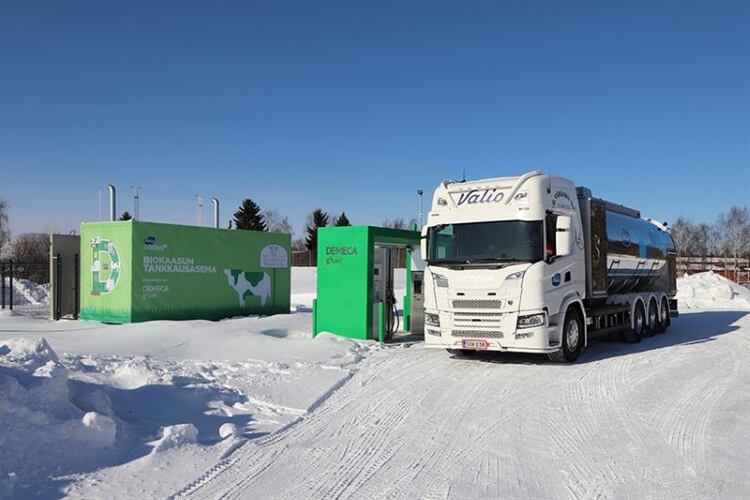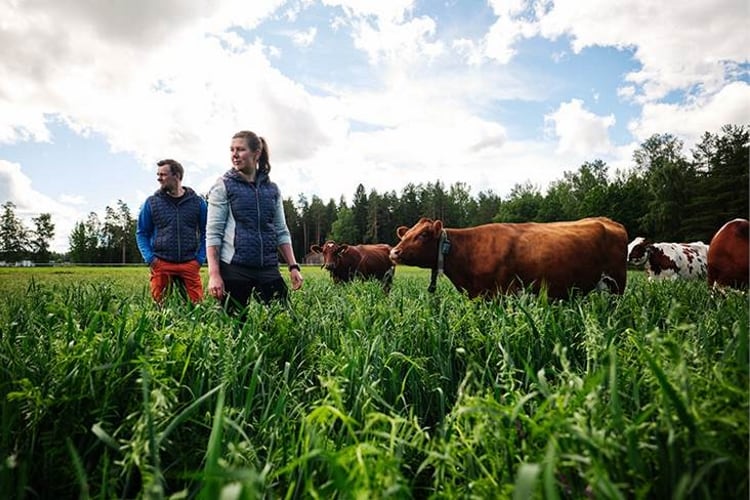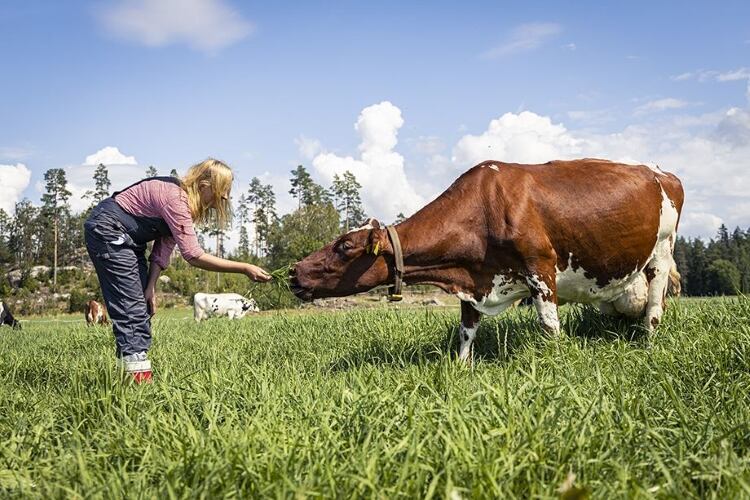Valio said it is committed to limit the environmental impact of its production chain to an increase of no more than 1.5 degrees Celsius, in accordance with the Paris Climate Agreement. Dairy farm greenhouse emissions are monitored with the CARBO environmental calculator. More than 500 dairy farms have already calculated their carbon footprint as a base for emissions reductions in the future.
Valio said its reductions are across all Valio’s production chain, from the dairy farm to the store shelves: the emission reduction target for milk is 50% on the farm level, 47% on the plant level, and 28% on the milk collection logistics level, by 2030 compared to the levels in 2019. However, Valio is aiming to reduce emissions for a net zero carbon footprint for milk by the year 2035.
“When we talk about resetting the carbon footprint of Valio’s entire operation and value chain, it is inevitable to assess our environmental work through an external, trustworthy party in a credible, transparent and science-based manner,” said Juha Nousiainen, Valio SVP, carbon neutral milk chain.
There are many things that affect milk’s carbon footprint. The volume of climate emissions varies between farms, depending on the energy used at the farm, the age of the herd, feeding and productivity, the plants and yields of their fields, and the ways the farm’s manure is processed. Additionally, milk refining, packaging, and logistics add another 10-15%. Valio said it is reaching for reduced emissions throughout the entire production chain.
Nousiainen said, “85-90% of milk and dairy products’ environmental impact is generated in primary production, before the milk is brought to a dairy. It is, however, important that the industrial and logistics emissions are monitored and reduced in various ways. In accordance with our targets, we are aiming to cut milk’s environmental impact in half by 2030. With such a challenge, we must understand what generates carbon emissions and what are the profitable ways to reduce them.”
Valio’s farm-specific carbon balance monitoring uses the CARBO environmental calculator, which was developed with Finland’s climate and conditions in mind. It can help dairy farms calculate their own environmental impact and figure out the most effective ways to reduce them.
“Actions that reduce emissions, such as carbon farming, higher grass harvest, animal wellbeing, and improving feed use also improve the farms’ productivity and profitability. Productivity and climate efficiency are not at conflict with each other, and it can also be a motivator for dairy farmers,” Nousiainen said.
The IPCC’s most accurate calculation guidelines, which Valio uses, includes all factors from the fertilizer used on the farms’ fields to the fuel they use. The calculation model is based on Valio’s development work over the past decades, and it is Carbon Trust certified.
“What’s needed at the foundation of our climate work are reliable carbon footprint figures, but the most important thing is the work on the carbon footprint, that is, what changes we are making. One of the most important features of the CARBO climate calculator is to identify the effect of our climate work on reducing our carbon footprint,” Nousiainen said.
"We congratulate Valio for setting science-based targets consistent with limiting warming to 1.5°C, the most ambitious goal of the Paris Agreement," said Cynthia Cummis, director of private sector climate mitigation at World Resources Institute, one of the Science Based Targets initiative partners.
"By aligning its goals with a 1.5°C future, Valio will be better placed to thrive as the global economy transitions to a zero emissions future."




